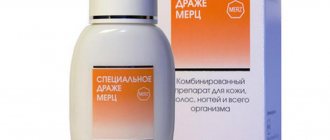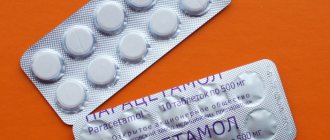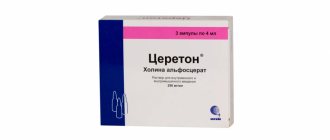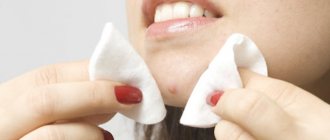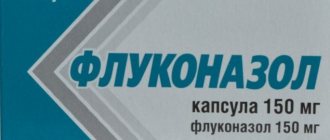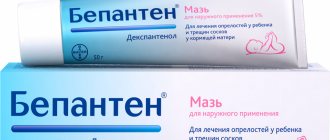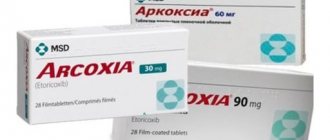Life in a metropolis is an endless space of choice and opportunity: education and work, entertainment and shopping, communication and relaxation. At the same time, big cities mean constant stress, disruption of the work-sleep-rest regime, poor nutrition, and poor ecology. These factors have a destructive effect on the female body. Age-related changes target not only ladies of “Balzac’s age”, but also younger women. And although skin aging is a natural physiological process, women refuse to grow old and want to look young for as long as possible.
Ovariamine 155 mg
Signs of skin aging
How many women are satisfied with the quality of their skin? How many times do you approach the mirror and leave with a sigh of disappointment? A familiar face inevitably changes. Changes happen constantly and not for the better.
This is how a face reveals our age:
- Thinning
- Dryness
- Flabbiness
- Dark spots
- Pronounced expression wrinkles
- Deep wrinkles
- Drooping corners of lips
- Enlarged pores
- Changing the contours of the oval face (ptosis)
Composition of the bioregulator Ovariamin
| Chemical composition and nutritional value of "Ovariamin" | |||
| Nutrients, % | Vitamins, mg/kg | ||
| Squirrels | 65,2 | Thiamine (B1) | 1,33 |
| Fats | 0,2 | Riboflavin (B2) | 1,5 |
| Carbohydrates | 16,4 | Niacin (RR) | 0,25 |
| Ash | 8,1 | Retinol (A) | 0,03 |
| Moisture | 10,1 | a-Tocopherol (E) | 0,71 |
| Energy value, kcal/100 g | 28,2 | ||
| Minerals, mg/g | Amino acids, nmol/mg | ||
| Aluminum | 0,0069 | Aspartic acid | 339 |
| Cobalt | <� 0,00034 | Threonine | 200 |
| Copper | 0,0065 | Serin | 231 |
| Iron | 0,28 | Glutamic acid | 461 |
| Magnesium | 2,0 | Proline | 275 |
| Calcium | 0,43 | Glycine | 237 |
| Potassium | 0,82 | Alanin | 298 |
| Sodium | 85,0 | Valin | 225 |
| Manganese | 0,003 | Methionine | 53 |
| Molybdenum | 0,00019 | Isoleucine | 119 |
| Phosphorus | 33,1 | Leucine | 329 |
| Sulfur | 210,0 | Tyrosine | 101 |
| Zinc | 14,44 | Phenylalanine | 116 |
| Lead | 0 | Histidine | 80 |
| Cadmium | 0 | Lysine | 299 |
| Arginine | 170 | ||
Why is this happening?
Skin aging is a genetically programmed process that can be accelerated by unfavorable factors. Gradually, the skin ceases to maintain hormonal-dependent homeostasis, in other words, its self-regulation processes slow down. The system can no longer restore the lost balance and overcome the influence of the external environment.
Most of the hormones that affect skin quality are produced in the ovaries. Against the background of general biological aging of the body, a gradual involution (decay) of ovarian functions occurs. Consequently, their production of the main sex hormones (estrogens, progesterone and androgens) is reduced. Estrogens regulate many functions of skin cells and are responsible for the way the skin looks. They are the ones who prevent the thinning of the epidermis and maintain skin turgor. Lack of estrogen affects the redistribution of subcutaneous fat tissue, as a result, wrinkles appear on the face. Estrogen deficiency leads to a decrease in the synthesis of collagen and elastin, and their fibers wear out over time. This process occurs especially rapidly under the influence of the sun (photoaging).
Due to the lack of estrogens, which affect the functions of skin capillaries, skin blood flow decreases. As a result, the epidermis is deprived of the required amount of oxygen and microelements. Skin regeneration slows down, and it becomes thinner, loses moisture faster and becomes dry.
Clinical trial results
Bioregulator Ovariamin and pregnancy. The conducted studies prove that the course use of Ovariamine regulates the cellular metabolism of the ovaries, supports the process of formation and maturation of follicles, and also participates in the correction of menstrual and reproductive functions.
Women with low functional ovarian reserve in 58% of cases noted a regular menstrual cycle, as well as a decrease in asthenovegetative and asthenoneurotic manifestations of the disease after using Ovariamine.
A laboratory and instrumental study was carried out, which revealed an increase in the size of the ovaries and an increase in their hormone production function, as well as a decrease in the gonadotropic function of the adenohypophysis.
Is it possible to correct the consequences of estrogen deficiency?
Modern medicine and cosmetology give a clear answer - of course it is possible and necessary! There are several options, and they are easy to combine. Everyone knows about them.
Medical ways to combat skin aging:
However, the problem is that not everyone can take hormones. There are a number of restrictions. Not every woman dares to undergo plastic surgery, and there are also countless contraindications for it. Cosmetics remain the most affordable and safest, especially in combination with a course of cosmetic procedures. Fortunately, the beauty industry offers a huge selection of anti-age products.
Peptide cosmetics are considered one of the promising areas in cosmetology. It quickly helps to cope with visible signs of skin aging.
Ovariamine, 155 mg, enteric-coated tablets, 40 pcs.
Clinic of the Institute of Bioregulation and Gerontology, Russia
Price from 558₽
Dietary supplement Not a medicine.
Instructions
Ovariamine is available in tablets. It is recommended to adhere to the established dosage regimen:
- 1 tablet every 7-12 hours for ovarian dysfunction associated with the postmenopausal period;
- 2-3 tablets in three doses to restore normal ovarian function before a planned pregnancy.
In preparation for conception, both partners can take a course of taking the drug. For men, there is a separate line that allows you to restore vascular patency and testicular function.
The modern rhythm of life makes its own negative adjustments to the functioning of the reproductive system of both women and men. Stress, air pollution, daily psycho-emotional and physical stress interfere with the normal production of hormones. They, in turn, control the functioning of all body systems, including the reproductive one. The ovaries cannot grow healthy follicles, which are the basis for the future fertilized egg. Disruption of the ovulation process prevents fertilization. To normalize the ripening of the follicle, it is necessary to take Ovariamine for two weeks continuously, and if necessary, the course can be repeated with a minimum interval of 3 months.
What are peptides and how do they work?
Peptides are short protein compounds whose molecules consist of a small number of amino acids. Peptides are synthesized in all living organisms and regulate physiological processes. It is with the help of peptides that individual cells and organs “communicate” with each other. Peptides include about half of all hormones and most enzymes.
There are different groups of peptides in the human body, the main ones being:
- Hormonal
- Immunological
- Neuropeptides
- Bioregulators
Over time, the human body experiences a deficiency of peptides. Thus, the number of agents capable of restarting protein synthesis and restoring balance in the body is reduced. Modern science proposes to fill this deficiency with the help of isolated natural peptides or chemically synthesized ones.
Naturally, not all types of peptides are used in cosmetology, but only those that can activate the ability of skin cells to restore and regenerate: stimulate the production of collagen and elastin, block the production of pigment, relax muscles, thereby smoothing out facial wrinkles, optimize blood circulation and antioxidant mechanisms protection.
Benefits of Ovariamin
The physiological value of the drug increases due to the additional content of a special vitamin complex in each tablet. It helps support the entire body by saturating the cells with nutrition. The skin takes on a healthy appearance, the blood is saturated with oxygen, and microelements are more easily absorbed.
Scientific studies have shown that the drug fully complies with safety requirements and does not threaten human health. At the same time, the effectiveness remains at a high level, since each Ovariamin protein, each of its acids is perceived by the body tissues as something natural, necessary for functioning.
Amino acids are essential elements, without which no system of the human body can function fully. The organs of the human body are not capable of synthesizing them, which is why it is so important to obtain amino acids from the diet, from the outside. An imbalance in the daily diet and constant stress can cause serious problems. Therefore, Ovariamin can be called a real salvation for those whose reproductive system has failed. It replenishes the lack of the most important substances, proteins and nucleic acids, giving vitality to the female body, which begins to work like a clock.
What should you do to look even better?
Particularly impressive results can be achieved if you add peptide preparations (dietary supplements) to your daily care products with peptides. It is very important to help the body produce the hormones necessary to maintain beautiful skin. This means that it is necessary to improve the functioning of the ovaries that produce estrogen. This is especially significant for menopausal women and young women with weakened ovarian function.
Peptides will help with this - bioregulators, which will selectively act only on ovarian cells and run the code to restore the functions of this organ.
How polypeptides work
Indications for use of Ovariamine
Ovariamine is taken primarily for problems with conception. They can manifest as cycle disturbances, making it impossible to track ovulation. In other situations, pregnancy may occur, but it cannot be carried to term due to improper attachment of the fertilized egg, insufficient thickness of the endometrium, or lack of hormones responsible for maintaining pregnancy.
Ovariamine can be prescribed after a frozen pregnancy, after a stillbirth or forced termination associated with fetal pathologies. Even several missed pregnancies in a row are replaced by a healthy course of the gestation period if a course of the drug has been completed.
The inability to get pregnant is also an indication for using the product. By restoring her cycle with the help of Ovariamine, a woman is able to accurately calculate the days for successful conception. Thanks to its natural composition, the drug does not cause any toxic reactions and does not increase the risk of developing cancer, unlike synthetic hormonal drugs.
Another important indication for the use of Ovariamine is planning pregnancy after 30 years. Many women at a young age do not decide to have a child due to financial instability or, on the contrary, due to rapid career growth. Taking the drug helps set up the reproductive system for conception when the woman is psychologically ready for this. If you follow the recommendations of your doctor and regularly visit the antenatal clinic, the chances of bearing a healthy baby are close to 100%.
Ovariamine ovarian bioregulator
This drug contains natural peptides identical to human ones, so our body does not reject them. The components of the drug, passing through the gastrointestinal tract, do not disintegrate, but penetrate through the cell membrane to the ovaries and affect their cells. This occurs through a mechanism called transcytosis.
The ovarian bioregulator is completely safe for humans, and since it is not a foreign substance and there will be no immune response to it. Peptides will trigger the natural process of protein synthesis inherent in ovarian cells.
Experts believe that it is better to start taking peptide drugs at the very first signs of skin aging.
The effectiveness of the drug has been confirmed by clinical studies.
Price
Ovariamine is sold in packs of 40 tablets each. You can buy one package for 550-600 rubles. Due to the fact that the drug affects only the ovaries, without affecting the condition and functioning of other internal organs, patients believe that the price is completely justified. It is important to pay attention to the presence of a hologram located on the packaging, which indicates the high quality of the product. Cheap counterfeits do not have it, pose a danger to women's health and exclude possible recovery.
PREMATURE MENOPAUSE
The term “menopause” is derived from the Greek “menos” (month) and “pausos” (end) and means the permanent cessation of menstruation or menstrual cycles, caused by a pronounced decrease and/or cessation (switching off) of ovarian function.
Depending on the time of onset, the following types of menopause are distinguished:
- timely (45-55 years, average 49-52 years);
- premature (36-40 years);
- early (41-45 years);
- late (over 55 years old).
Timely menopause is the most striking manifestation of the menopause or transitional period in a woman’s life. “Climacteric” (from Greek - step, ladder), the terms “menopause”, “menopause”, “menopause” are synonyms denoting the transition from the reproductive period to old age. This period is divided into premenopause, menopause, postmenopause and perimenopause. What is most characteristic of this physiological period? It is characterized by a gradual decrease and exclusion of ovarian function from a complex ensemble of endocrine glands. First, reproductive function decreases and turns off, then, against the background of progressive depletion of the follicular apparatus of the ovaries, menstrual cycles stop (menopause), and 3-5 years after menopause, the hormonal function of the ovaries also turns off.
Both premature and late menopause require close attention and correction of possible disorders. Due to the fact that it is always difficult to estimate which menstruation was the last, it is customary to estimate the date of menopause retrospectively, namely: one year after the last menstruation.
The age of menopause often depends on heredity, which is convincingly shown in identical twins, when the difference in the age of the first and last menstruation in twins ranges from 4-6 months. However, illnesses suffered by the individual and environmental factors play an important role.
Premature menopause is quite rare (1-2%), but there are many reasons for its occurrence. Often the true cause is quite difficult to establish.
The ovary is a complex structure within which the cortical and medulla layers are distinguished. In the ovarian cortex, eggs are laid in utero, surrounded by granulosa cells, forming follicles with eggs. By the time of the first menstruation in puberty, 300-400 thousand of these follicles are found in the ovaries. During the 25-30 years of the reproductive period, follicle maturation, ovulation and death (atresia) of follicles through apoptosis constantly occur in the ovaries. Only 0.1% of the number of follicles ovulate and can give birth to offspring, and 99.9% are atretic. By the age of 40, an average of about 10 thousand follicles remain. In addition, both female (estrogens and progesterone) and, to a lesser extent, male sex hormones are synthesized in the ovaries. These hormones are involved in the formation of a typical female physique and monthly prepare the reproductive organs for pregnancy.
Receptors for estrogen and progesterone have been identified not only in the reproductive organs. Hormonal receptors (representations), through which sex hormones exert their effects, are found in the heart and walls of blood vessels, in the central nervous system, bone, genitourinary and other organs and systems of the body. Since a young woman secretes sex hormones in a cyclical mode, then the organs and tissues experience their effects also in a cyclical mode.
With premature menopause, the cyclic release and influence of female sex hormones on various organs and tissues that have been exposed to this effect for decades ceases. In addition, the woman also loses the ability to conceive.
In recent years, the opinion has become increasingly widespread that it may be more appropriate to call this condition not “premature menopause”, but “premature ovarian failure”. Although, in essence, we are talking about the same process, from the point of view of deontology, it is more appropriate for both the doctor and the patient to call this condition “premature ovarian failure.”
The main causes of premature ovarian failure:
- genetic factors;
- autoimmune process;
- viral infection;
- iatrogenic (chemotherapy, radiotherapy, surgery on the uterus and ovaries);
- idiopathic (environmental toxins, fasting, smoking - more than 30 cigarettes per day).
According to our practice, premature ovarian failure is often observed in mothers and daughters. Despite the fact that there are many reasons, processes in the ovaries mainly occur according to two main scenarios:
- complete depletion of the follicular apparatus of the ovaries, the so-called ovarian depletion syndrome;
- syndrome of resistant (silent, refractory) ovaries, in which follicles are detected in the ovaries, but they do not respond to their own gonadotropic stimuli.
Clinical picture
Common to both options:
- secondary amenorrhea, infertility;
- well developed secondary sexual characteristics;
- FSH and LH levels are high;
- estradiol levels are low;
- symptoms of estrogen deficiency: hot flashes, sweating, insomnia, irritability, decreased memory, and ability to work;
- during the first 2-3 years, osteopenia develops, sometimes osteoporosis; an increase in atherogenic lipid fractions (cholesterol, triglycerides, LDL) and a decrease in HDL;
- occasionally genitourinary symptoms appear: dryness during sexual intercourse, itching, burning;
- improvement occurs when taking sex hormones.
The main differences between the two forms of premature ovarian failure are as follows.
When the follicular apparatus is depleted:
- with ultrasound - small size of the ovaries, absence of follicles in them;
- persistent cessation of menstruation, symptoms of estrogen deficiency progress;
improvement occurs with hormone replacement therapy (HRT); with ovarian resistance: - the ovaries are reduced in size, but the follicles are visible;
- There are rare episodes of menstruation.
When the ovaries are depleted, the symptoms of estrogen deficiency or the symptoms of typical menopausal syndrome are more pronounced.
With resistant ovarian syndrome, estrogen deficiency symptoms are less pronounced, since it is possible, although extremely rare, to activate ovarian function and, accordingly, improve the general condition.
Tactics for managing patients with premature ovarian failure
- Examination.
- Study of anamnesis.
- Determination of FSH, LH, TSH, prolactin, estradiol in the blood.
- Craniography, for headaches - computed tomography or nuclear magnetic resonance, color fields of vision.
- Ultrasound of the genitals with detailed characteristics of the ovaries and uterus.
- Determination of blood lipids.
- Mammography.
- For long-term amenorrhea (more than 2-3 years) - densitometry of the lumbar spine and femoral neck.
Since menopause is premature, and at this age the ovaries normally function, therefore, premature deficiency of sex hormones can contribute to the earlier appearance of typical menopausal disorders, the frequency of which is 60-70%.
Classification of menopausal disorders
Group I - early symptoms (typical menopausal syndrome)
Vasomotor: hot flashes, chills, increased sweating, headaches, hypotension or hypertension, rapid heartbeat.
Emotional-vegetative: irritability, drowsiness, weakness, anxiety, depression, forgetfulness, inattention, decreased libido.
Group II - medium-term (after 2-3 years)
Urogenital: vaginal dryness, pain during sexual intercourse, itching and burning, urethral syndrome, cystalgia, urinary incontinence.
Skin and its appendages: dryness, brittle nails, wrinkles, hair loss.
Group III - late metabolic disorders (after 5-7 years)
Cardiovascular diseases (CHD, atherosclerosis), postmenopausal osteoporosis or osteopenia.
Individual selection of therapy
Taking into account the above, it seems important to develop an individual “program for restoring and maintaining health” for the long term, taking into account the family and personal risk of the main diseases of aging. Such a program should include regular examination, namely ultrasound, mammography, densitometry and/or determination of biochemical markers of bone remodeling, lipid profile, tumor markers, etc., as well as recommendations for lifestyle changes, such as increasing physical activity, a balanced diet, avoiding Smoking and other bad habits help reduce the risk of cardiovascular diseases and osteoporosis.
In recent years, there has been a constant search and improvement of therapeutic approaches to the rational use of HRT in each specific patient (individualization of therapy). HRT preparations differ from each other only in their progestogen component, since the estrogenic component is represented by 17β-estradiol or estradiol valerate, which correspond in structure to ovarian estradiol. In addition, recently much attention has been paid to the choice of route of drug administration (oral or transdermal).
The type of hormone therapy is also selected taking into account the following factors:
- a woman's desire to have a monthly "menstruation";
- when indicating surgical interventions - indications and scope of the operation and the presence of the uterus;
- the presence of fear of pregnancy, especially with resistant ovaries;
- decreased or absent libido;
- indications of heart attacks in young parents, recurrent miscarriage, liver disease, thrombophlebitis.
The goal of HRT is to pharmacologically replace the hormonal function of the ovaries in women with deficiency of sex hormones, using such minimally optimal doses of hormones that would actually improve the general condition of patients, ensure the prevention of late metabolic disorders and are not accompanied by the side effects of estrogens and progestogens.
Basic principles and indications for prescribing HRT
- The use of only “natural” estrogens and their analogues for HRT is indicated.
- Estrogen doses are low and should be consistent with those in the early proliferation phase of young women.
- The combination of estrogens with progestogens makes it possible to protect the endometrium from hyperplastic processes with an intact uterus.
- Women with a removed uterus are advised to use estrogen monotherapy in intermittent courses or continuously. If the indication for hysterectomy was endometriosis, then a combination of estrogens with progestogens or with androgens, or monotherapy with progestogens or androgens in a continuous mode, is used.
Women need to be provided with appropriate information to enable them to make an informed decision to undergo HRT. All women should be informed:
- about the possible impact of short-term estrogen deficiency, namely the occurrence of early typical symptoms of menopausal syndrome and the consequences of prolonged deficiency of sex hormones: osteoporosis, cardiovascular diseases, genitourinary disorders, etc.;
- about the positive effects of HRT, which can alleviate and eliminate early menopausal symptoms, and also actually serve to prevent osteoporosis and cardiovascular diseases;
- about contraindications and side effects of HRT.
To ensure optimal clinical effect with minimal adverse reactions, it is essential to determine the most appropriate optimal doses, types and routes of administration of hormonal drugs.
There are three main modes of HRT.
- Estrogen monotherapy. In the absence of a uterus (hysterectomy), estrogen monotherapy is prescribed in intermittent courses or continuously.
- Combination therapy (estrogens with progestogens) in a cyclic mode.
- Combination therapy (estrogens with progestogens) in a monophasic continuous mode.
Regimes 2 and 3 are prescribed to women with an intact uterus.
Estrogen monotherapy: intermittent courses (estrofem, progynova, estrimax, divigel, estrogel, climar patch, ovestin) or continuous regimen for 3-4 weeks with weekly breaks.
Combination therapy (estrogens with progestogens) in a cyclic mode:
- two-phase drugs: intermittent cyclic regimen (Divina, Klimen, Klimonorm);
- two-phase drugs: continuous mode (femoston 2/10 or femoston 1/10);
- three-phase drugs in continuous mode (trisequence, triaclim).
With this regimen, a menstrual-like reaction is observed, which is extremely important psychologically for a young woman.
Monophasic combination therapy (estrogens with progestogens) in a continuous mode (cliogest, climodien, pausogest).
With a continuous regimen of hormone therapy, a menstrual-like reaction is excluded.
Livial (tibolone) has continuous estrogenic, progestogenic and weak androgenic activity.
If a hysterectomy is performed for genital endometriosis, preference is given to monophasic combination therapy (Climodien, Cliogest, Pausogest) or Livial in order to exclude stimulation of possible endometriotic heterotopies by estrogen monotherapy.
If the clinical picture is dominated by changes in the cardiovascular system and atherogenic fractions of lipids in the blood, preference should be given to two- or three-phase drugs in which the gestagenic component is represented by progesterone derivatives (Climen, Femoston).
If the clinical picture is dominated by weakness, asthenia, decreased libido, pain in bones and joints, and osteoporosis, then preference should be given to biphasic drugs with a gestagenic component - a derivative of 19-nortestosterone (klimonorm), as well as Divin (MPA with a weak androgenic effect) ( table).
For urogenital disorders in perimenopause, preference is given to local (vaginal) monotherapy with estriol without the addition of progestogens. When urogenital disorders are combined with systemic metabolic disorders (osteoporosis, atherosclerosis), a combination of local and systemic therapy is possible.
Cyclic two- and three-phase HRT, along with improving the general condition, contributes to the regulation of the menstrual “cycle”, as well as the prevention of hyperplastic processes in the endometrium due to the cyclic addition of progestogens. It is extremely important to inform the woman about the following:
- when taking two- or three-phase HRT, a monthly menstrual-like reaction is observed;
- HRT drugs do not have a contraceptive effect.
So, combined two- and three-phase drugs are most suitable for women with premature menopause, as they provide cyclic protection of the endometrium with progestogens, similar to what happens in the normal menstrual cycle.
For severe diseases of the liver, pancreas, migraines, blood pressure more than 170 mm Hg. Art., with a history of thrombophlebitis, parenteral administration of estrogens in the form of a weekly patch (Klimar) or gel (Divigel, Estragel) is indicated. In such cases, with an intact uterus, it is necessary to add progesterone and its analogues (duphaston, utrozhestan).
The following examination is recommended before prescribing HRT:
- gynecological examination with oncocytology;
- Ultrasound of the genital organs;
- mammography;
- according to indications - lipid profile, osteodensitometry.
Contraindications for prescribing HRT: - vaginal bleeding of unknown origin;
- acute severe liver disease;
- acute deep vein thrombosis;
- acute thromboembolic disease;
- cancer of the breast, uterus and ovaries (current; if in history, then exceptions are possible);
- endometriosis (estrogens monotherapy is contraindicated);
- congenital diseases associated with lipid metabolism - hypertriglyceridemia, the use of parenteral forms is indicated.
If there are contraindications to HRT, the issue of using alternative therapy is decided: phytoestrogens (climadinon) or homeopathic remedies (climatoplan).
It is appropriate to note that if a woman has a severe reaction to “menopause” and fears of pregnancy, it is quite possible to use low- and micro-dose combined oral contraceptives: Logest, Mercilon, Novinet, Marvelon, Regulon, Yarina - since the number of contraindications increases with age.
Hormone therapy should be continued until the age of natural menopause (50-55 years); in the future, the issue is resolved individually, taking into account the woman’s wishes, her state of health, and reaction to hormonal drugs.
Premature menopause (premature ovarian failure) is a condition characterized by premature shutdown of the ovaries and the development of an estrogen deficiency state. Women with this condition are indicated for hormone replacement therapy to improve their general condition, improve quality of life, and prevent premature aging and diseases of old age.
V. P. Smetnik, Doctor of Medical Sciences, Professor of the Scientific Center of Obstetrics, Gynecology and Perinatology of the Russian Academy of Medical Sciences, Moscow
Composition of biphasic drugs for HRT registered in Russia
| A drug | Estrogens | Dose, mg/day | Progestogens | Dose, mg/day |
| Divina | estradiol valerate | 2 | IPA | 10 |
| Klymen | estradiol valerate | 2 | cyproterone acetate | 1 |
| Klimonorm | estradiol valerate | 2 | levonorgestrel | 0,15 |
| Femoston 2/10 | 17β-estradiol | 2 | dydrogesterone (duphaston) | 10 |
| Femoston 1/10 | 17β-estradiol | 1 | dydrogesterone (duphaston) | 10 |
